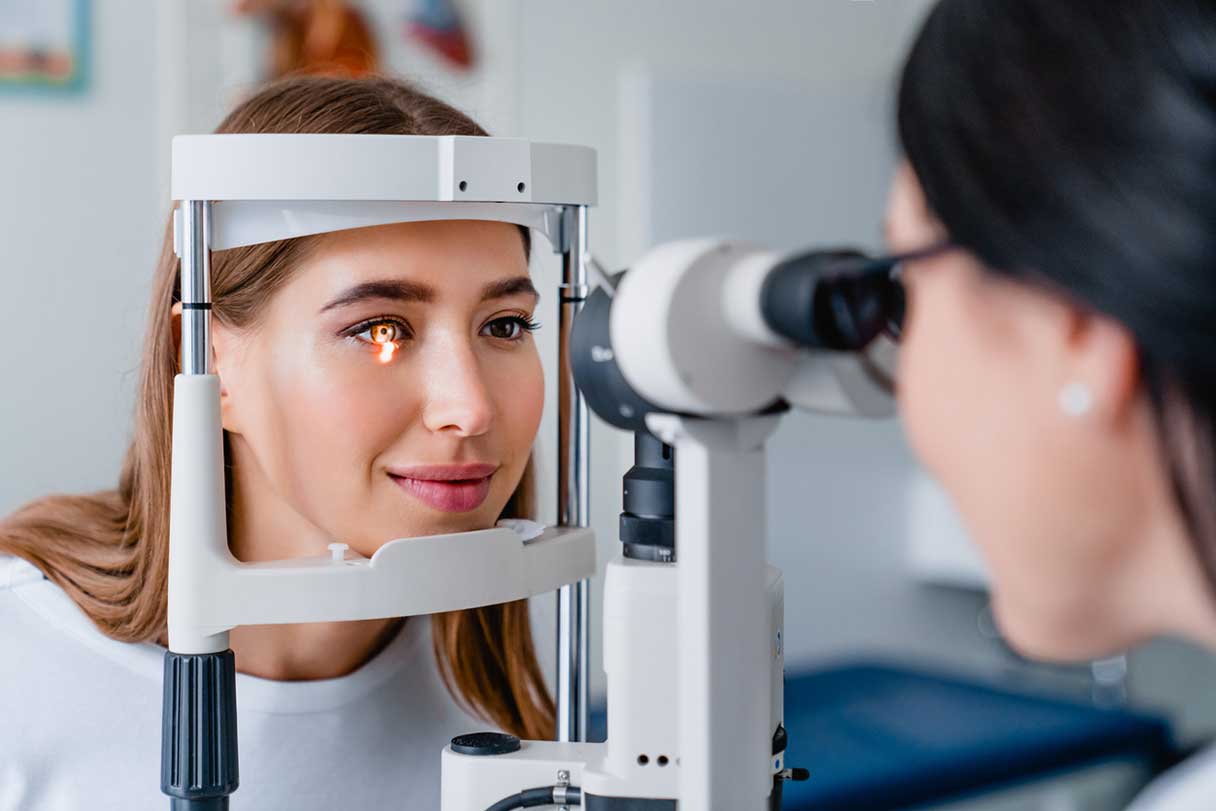Color blindness, or color vision deficiency (CVD), is a fairly common condition that makes it difficult to distinguish between certain colors. An estimated 300 million people worldwide are affected by color blindness, specifically 1 in 12 men and 1 in 200 women.1
Color blindness is most commonly a genetic condition inherited at birth, but CVD can also result from disease, the use of certain medications, trauma4 to the eye or brain or aging.1
In the U.S., color blindness is a disability covered by the Americans with Disabilities Act (ADA) and requires employers to make reasonable accommodations for color-blind employees.2
Types of Color Blindness
There are different types of color blindness that cause different difficulties in discerning between colors, including red-green, blue-yellow and monochromacy.
Red-green color blindness
Red-green color blindness is the most common type of genetic color blindness and causes people with this type of CVD to confuse red, green, purple, blue and orange.2
There are three types of red-green color blindness, including:2
- Deuteranomaly. The most common type of red-green CVD, this type makes green and yellow appear more red. Blues and purples may also be confused. This type of color blindness is usually mild and does not typically interfere with everyday activities.
- Protanomaly. This CVD makes red, orange and yellow appear more green and less bright. This form of color blindness is also mild and doesn't interfere with daily activities.
- Protanopia and deuteranopia. These two types of CVD cause red and green to be indistinguishable. Protanopia causes red to appear black, and shades of orange and green to appear yellow. Deuteranopia causes green to appear as dark yellow, and red to appear yellow-brown.
Blue-yellow color blindness
Blue-yellow color blindness is more rare, appearing in 1 in 10,000 people and affecting men and women equally. People with blue-yellow color blindness often develop the condition as a result of glaucoma, diabetic retinopathy, macular degeneration or optic nerve damage.2
People with blue-yellow color blindness struggle to distinguish between yellow and red, and blue and green.2
The two types of blue-yellow CVD are:2
- Tritanomaly. In this type of color blindness, blue appears green, and there may be difficulty discerning between red, yellow, pink and orange.
- Tritanopia. People with this color blindness cannot tell the difference between blue and green, purple and red, and yellow and pink; colors may appear more muted.
Monochromacy
Complete color blindness is rare, and patients with this type of CVD do not see color at all.3 Instead, they see shades of black, white and gray.2 People with monochromacy can be particularly sensitive to light3 and may wear dark glasses to protect their eyes.2
Color Blindness Symptoms
CVD is often diagnosed early in children, as color blindness testing is usually included as part of a standard pediatric eye exam. If you have a history of color blindness in your family or exhibit any of the following symptoms, you can contact your eye doctor to perform simple tests to determine if you have color blindness:5
- Difficulty discerning between colors
- Decreased attention span when coloring
- When asked, difficulty in selecting the correct colors in crayons, colored paper or other coloring materials
- Struggling to read or work with colored pages
- Headache or eye fatigue if working with a red and/or green background
- Sensitivity to bright light
Testing for Color Blindness
Eye doctors normally test for color blindness during routine eye exams.2 You don't usually need to wait for results, as your doctor can tell if you have a form of CVD right away. If the results are unclear, there are other tests for color blindness your doctor can do for more clarity.2 In addition, there are online color blindness tests you can take at home if you suspect you may have a form of CVD.2 However, at-home test results should be confirmed by a qualified eye doctor, who will also be able to recommend an appropriate care plan.
Similarly, if you notice a change in your vision or color perception, inform your eye doctor and ask them to check for color blindness. Color blindness in children might first be noticed by a teacher or school nurse, but a full exam by your family's eye doctor should be conducted.6
6 Types of Color Blindness Tests
The following six tests are used as an initial screening for color vision deficiencies.
1. Ishihara test
The Ishihara test is the most common type of color plate test for red-green color deficiency. Your eye doctor will ask you to look at a series of images made up of colored dots, with a number, pattern or shape in the middle. Trouble discerning the shape, number or pattern could indicate a color deficiency.2
2. Hardy-Rand-Rittler test
This test is similar to the Ishihara test, but also screens for blue-yellow deficiencies in addition to red-green deficiencies.2
3. Cambridge color test
This test uses a computer and is similar to the Ishihara test in that the patient is looking at a colored, spotted screen for a letter “C" to appear randomly. When the letter appears, the patient presses one of four keys.6
4. Anomaloscope test
This test asks the patient to match the brightness of two lights by looking through a lens into a piece of equipment called an anomaloscope to view two halves of a circle that are usually made up of yellow, green and red and are of different degrees of brightness. The patient turns a knob until the top and bottom halves of a circle match in color and brightness.6
5. Farnsworth-Munsell 100-hue test
This test identifies the ability to discern between subtle differences in hues.6 The patient is asked to arrange colored pegs in a particular order, based on color intensity.2 Mistakes in the arrangement may indicate a CVD.2 This test is sometimes used by companies where employees do work that requires them to see colors correctly.6
6. Farnsworth lantern test
The U.S. military uses this method to test for mild or severe forms of color blindness6 that could affect the ability to pick up on maritime or aviation signals.2 Nine pairs of colored dots of lights are shown to the patient one at a time for two seconds each.2 The colors can be combinations of yellow, red or green, or they may be a pair of the same color.2 The task is to identify the colors of the dots in each pair.2
Color Blindness Treatments
There is no cure for color blindness.2 However, newly developed technology offers people with mild to moderate CVD issues the potential to minimize and compensate for color deficiencies with glasses made with specially tinted lenses.7
Color blind glasses
Color blind glasses don't usually require a prescription and work similarly to sunglasses in regard to limiting your field of vision.7
Color blind glasses run on average $200 to $250 per pair, but can cost as much as $450 or more.7 Clip-on versions of these lenses average about $100 per pair.7
Color blind glasses are not usually covered by health insurance as they're not considered medically necessary, but you may be able to cover them through an FSA or HSA program.7
While color blind glasses may help some patients with CVD issues, how successfully they're able to help individual patients will depend on a variety of factors, such as the type of CVD, age, lifestyle and severity of the color blindness.7
Financing Eye Exams With the CareCredit Credit Card
Regular eye exams are an important part of your eye health. Whether you're getting an eye exam or needing eye surgery, the CareCredit credit card can help you pay for care where your insurance leaves off.* Apply today and use our Acceptance Locator to find a vision specialist near you that accepts CareCredit. Continue your wellness journey by downloading the CareCredit Mobile App to manage your account, find a provider on the go and easily access the Well U hub for more great articles, podcasts and videos.
Author Bio
Anne-Marie Kennedy is a freelance writer with more than 20 years of experience covering health and wellness, personal finance and real estate/investing.







